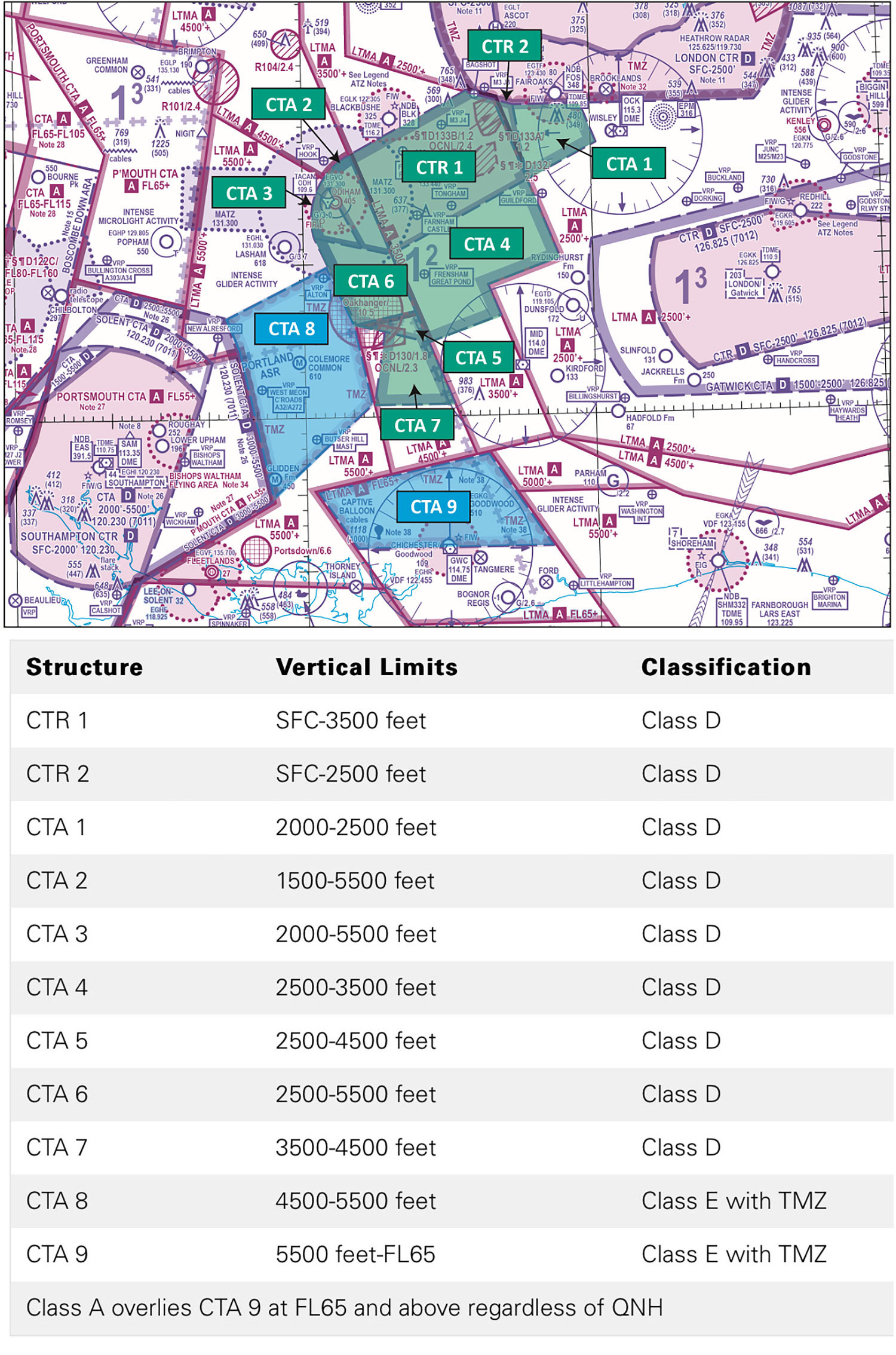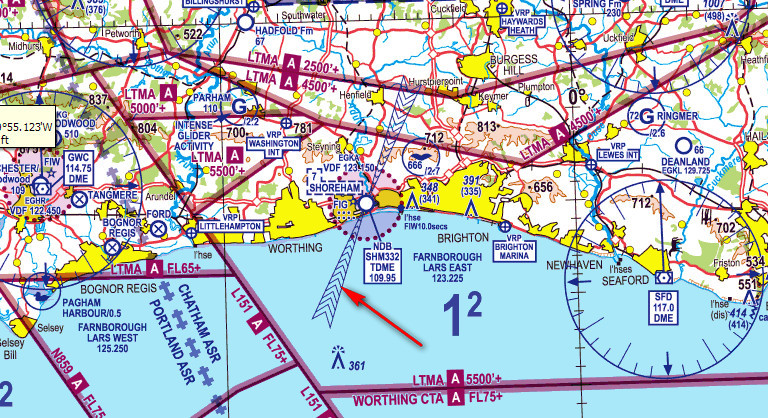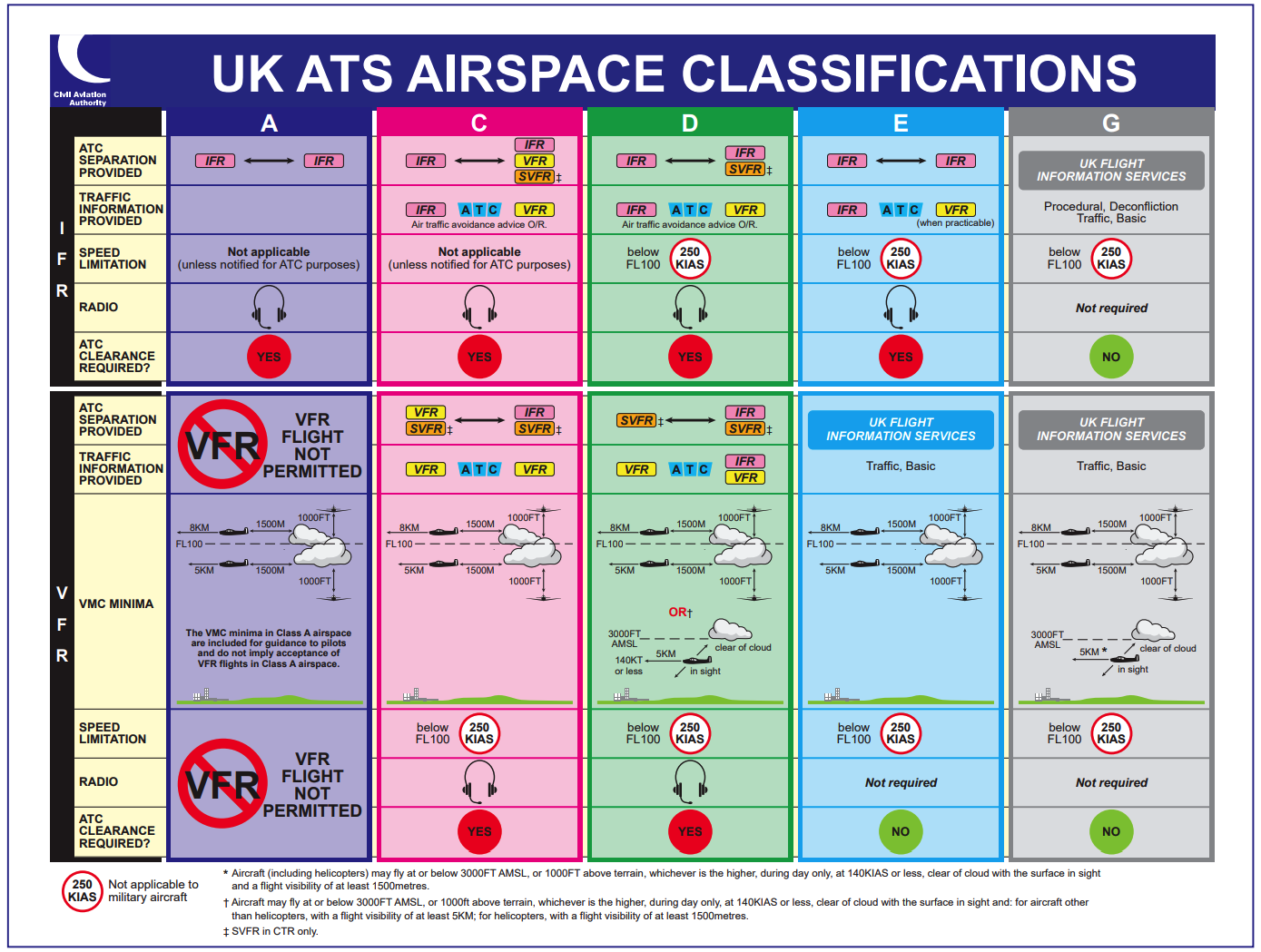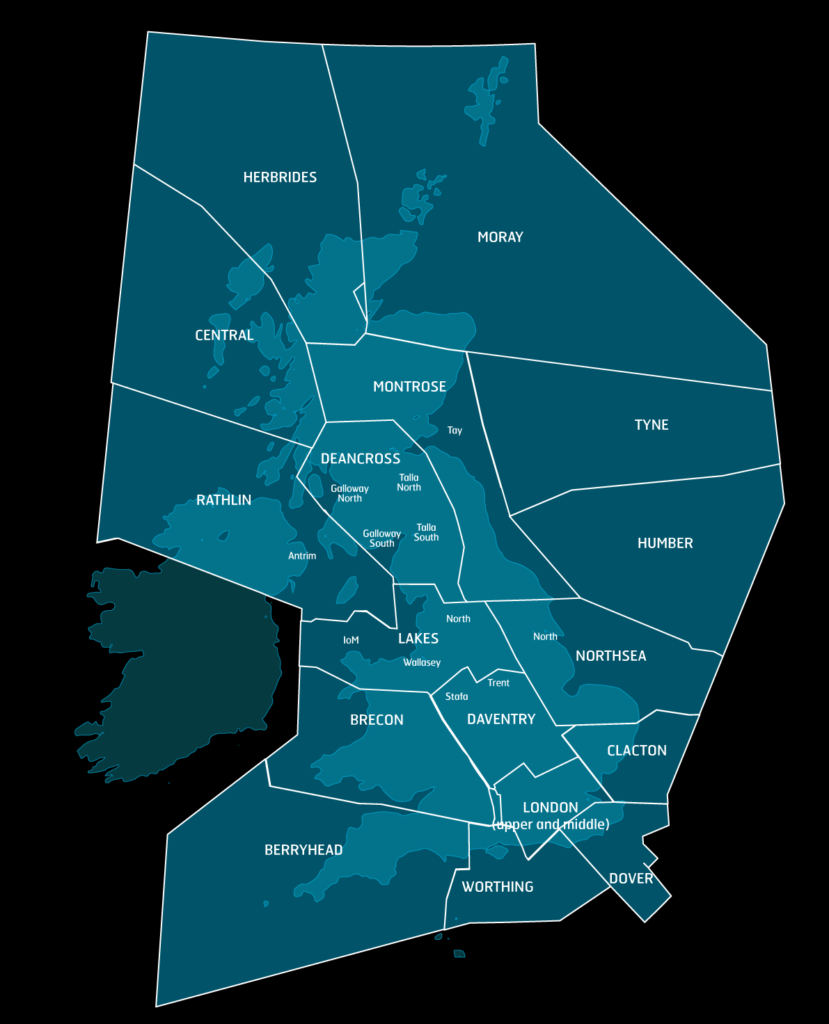class g airspace uk
Controlled and uncontrolled airspace. It extends from the surface to the base of the overlying Class E airspace.
However para 534 sets out the Exceptions which notes that the the requirements at sub-paragraphs 5313 c to 5313 e shall not apply to gliders including self-sustaining.

. Genghis is right though IFR GA in the UK is relatively unusual - certainly on airways - and so it is normally assumed that a light aircraft wont be able to take an. The RWY 3 VOR 1000 foot point is proposed to be contained within the Class D surface area and the airspace would not be needed. Of note is the requirement d that all aircraft operating under VFR within United Kingdom airspace at and above FL 100 require Mode S Elementary Surveillance.
The Class E airspace area designated as an extension to a Class D or Class E. Typically Class G airspace includes all of the airspace below 14500 ft. Class G airspace extends from the surface to the base of the overlying Class E airspace.
Class A eg. Those parts of the Channel Islands TMA South which lie within the Brest FIR are notified as Class E Airspace and are controlled by Brest ACC. 17 Pilots operating in Class G airspace are encouraged to obtain an appropriate air traffic service see ENR 1 sections 23 and 24 or CAP 774 UK Flight Information Service from the designated air traffic service unit.
Boundaries of Class G Airspace. The aircraft we see in our skies are using an intricate and highly structured route network which keeps us safe as we fly from A to B from the moment we take off to touchdown at our destination. When approaching to land at an airport without an operating tower airplane must make all turns.
No airspace is designated Class B in the UK. S11 Class G airspace in the UK continues to evolve and contain a very broad range of activity from Commercial Air Transport to high energy military to all types of sport and recreational flying. The UK is unusual in that it has not adopted a widespread class E system of airways for most airspace lower than FL 70.
Uncontrolled airspace class F G At and above FL 100. Although ATC has no authority or responsibility to control the ATC pilots should remember there are visual flight rules minimums which apply to Class G airspace. The Class E airspace area designated as an extension to a Class D or Class E surface area should be removed southwest of the airport.
Classes A C D E are Controlled Airspace whilst for Classes F G Airspace the UK has registered differences from the ICAO Standard so as to allow greater flexibility to VFR flights at and below 3000ft amsl and to allow IFR flight in this airspace without the requirement to carry a radio. In class G ie. They still have to adhere to what is know as VFR Visual Flight Rules just like cars have to adhere to the Hightway Code aviation has their own code called VFR.
Therefore for light aircraft IFR flight in Class G. NATS is the custodian of UK airspace managing the invisible infrastructure that helps a wide range of airspace users to fly safely. NATS is the custodian of UK airspace managing the invisible infrastructure that helps a wide range of airspace users to fly safely.
All remaining airspace comprising by far the largest part of the airspace below FL 195. In the UK class G airspace is uncontrolled. If you have an IR that is valid in a legal sense for the aircraft you are flying then you can fly in UK Class A airspace.
Just tell them thats what you want to do. That is not otherwise designated Class B C or D airspace. Pilots who operate within Class G airspace especially those who operate proximate to the boundary of controlled airspace and have chosen not to obtain a suitable ATS.
Uncontrolled airspace there are currently no restrictions on. London TMA Terminal Manoeuvring Area VFR flight not permitted unless any local agreements on which you must be briefed Class B none in UK Class C airspace in the UK extends from Flight Level FL 195 19500 feet to FL 660 66000 feet. There is an ongoing need to identify and conduct the work required to enable the continued evolution of UK Class G Airspace and operations within it.
How airports work operationally. The least restrictive airspace classification applied to all other airspace. Class G Airspace is the uncontrolled airspace classification.
Classes A C D E are controlled Class G is uncontrolled. This means there are no restrictions on. Class G airspace is uncontrolled airspace that has not been designated as Class A B C D or E.
Category G airspace is everything else that isnt AC D E and means that the air is uncontrolled formally and pilots can fly there without having to obtain any Air Traffic Control permissions. Those parts of the Channel Islands TMA North which lie within the London FIR and are located below the lower limits of the Berry Head and Portsmouth CTAs are notified as Class G Airspace. This means there are no restrictions on.
Classes A C D E are Controlled Airspace whilst for Classes F G Airspace the UK has registered differences from the ICAO Standard so as to allow greater flexibility to VFR flights at and below 3000ft amsl and to allow IFR flight in this airspace without the requirement to carry a radio. Which aircraft can enter it. More information on airspace classifications can be found in the CAA policy statement The Application of ICAO Airspace Classifications in UK Flight Information Regions4 16.
Class G Airspace. In the UK class G airspace is uncontrolled. Airspace is divided into 3-dimensional blocks which are classified from class A to class G airspace.
Across the world airspace is structured according to internationally agreed principles. In the UK all other airspace is controlled and aircraft are directed by air traffic controllers. Which aircraft can enter it what equipment the aircraft must carry the routes taken by the aircraft.

Drone Guide To Understanding Airspace

The Hidden Secrets Of Uk Airspace Airspace Classifications Nats Blog

Class G Airspace Everybody Struggles With This One Online Ground School Youtube

Airmanship Airspace C Crown Copyright No Part Of This Presentation May Be Reproduced Without The Permission Of The Issuing Authority The Views Expressed Ppt Download

New Farnborough Airspace Comes Into Effect Flyer

Introduction To Airspace The Sky S The Limit Facebook

Uk Airspace Classes And What They Look Like On A Chart General Paramotor Discussion Www Paramotorclub Org

New Farnborough Airspace Comes Into Effect Flyer
What Is Class G Airspace Quora

Uk Airspace Classes And What They Look Like On A Chart General Paramotor Discussion Www Paramotorclub Org

The Hidden Secrets Of Uk Airspace Airspace Classifications Nats Blog

This Is How Class G Airspace Works Boldmethod

Flying Interaction With Atc In Class G Airspace

The Sky S The Limit The Sky S The Limit Uk Airspace The 5 Classes And What They Look Like On A Chart Safer Smarter Confident Pilots In The Uk There Are
Airspace Classifications Student Pilot Guide

The Hidden Secrets Of Uk Airspace Airspace Classifications Nats Blog


